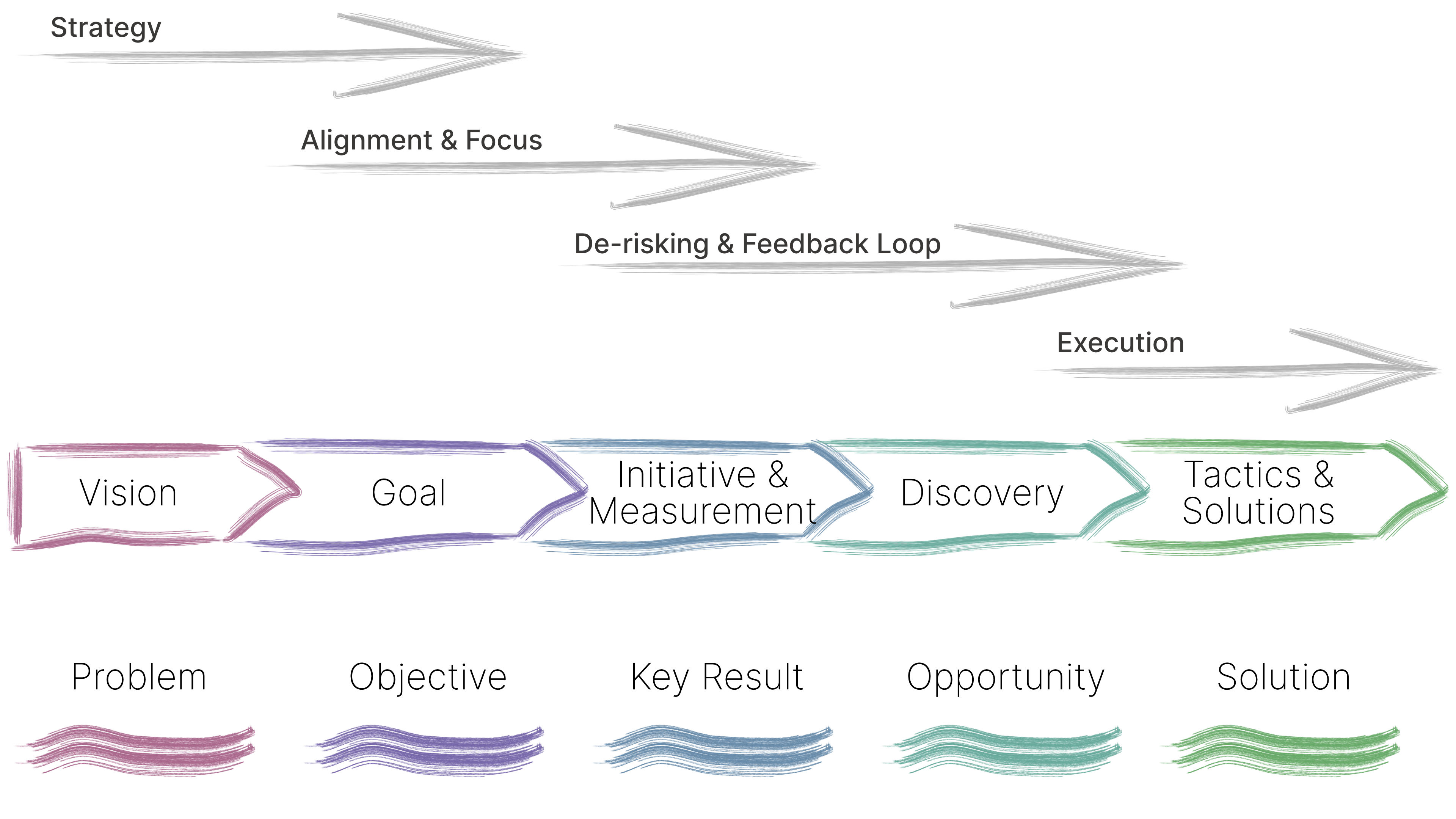Every product team wants to build something great, but not every team will. Having a product strategy increases the odds of success.
What is product strategy?
When thinking through abstract concepts like strategy, I like to start with how others have approached defining or describing it.
The term strategy in general
"A plan of action or policy designed to achieve a major or overall aim."
– Oxford English Dictionary
"Strategy is at least as much about what an organization does not do as it is about what it does."
– Richard P. Rumelt (Good Strategy/Bad Strategy)
The term strategy within the context of product strategy
When it comes to modern literature that discusses product strategy, there are some great reads out there.
Milissa Perri, in her book Escaping the Build Trap, discusses how a well-articulated strategy transcends how teams ship features, it's about creating a focus on a higher-level vision and stability for teams.
In his book Inspired, Marty Cagan paints a picture of how product vision and strategy come together to describe the desired future and create a plan for achieving it.
A few thematic takeaways around the abstract concept of product strategy (and product vision):
-
Strategy is directional
-
Strategy aids in achieving the big picture
-
Strategy is limiting and enabling
-
Product vision is the big picture
-
Product vision communicates future aspirations
-
Product strategy connects to a product vision
-
Product strategy is a stable target
-
Product strategy is action-oriented
-
Product strategy coordinates efforts
-
Product strategy creates focus
-
Product strategy enables discernment
How do you know if you have a product strategy?

The circle on the left represents a scatter-shot approach to solving a problem or achieving a vision (if it exists). It's the - "let's try anything and everything" approach. When this is the approach to discovering what to do next, there is a lot of trying something and seeing if it sticks.
The circle on the right demonstrates the impact of applying focus, clarity, and discernment to a problem, in other words, a product strategy. When there is a guiding policy, and the high-level actions are clear, a team can focus on achieving the product vision and solving the problem. When that focus is missing, you end up trying everything, which can destroy productivity and lead to identity problems - What problem does this product solve again?
Properly level your vision/problem statement
In his book Inspired, Marty Cagan advises that a product vision should be between 2 and 5 years out. For hardware products, he states 5-10 is typical. Melissa Perri paints a similar picture between 5-10 years in her book Escaping the Build Trap.
A product strategy builds upon the vision or diagnosis. Take a look at the highest levels of your product organization and ask yourself:

OKRs for strategy deployment
OKRs are a battle-tested tool for creating focus and alignment within an organization.

A common OKR deployment anti-pattern
In this following example, you could see an engineering lead setting an OKR to reduce technical risk in the product (increase test coverage & quality, improve performance, etc...). A UX lead may set an OKR to transition to a new atomic design system.

When functional teams or individuals set OKRs within the context of their respective teams, they will be optimized for their particular function and not for the cross-functional business objectives, which can easily lead to alignment issues.
Continuing on the example – a business may want to set an objective to reduce churn. If the functional teams are focused on their particular OKRs (performance improvements & implementing an atomic design system), the chances of coordinating a successful effort to achieve the business/product goal will be difficult to achieve.

Hoisting objectives up a level to be shared across the entire product team creates focus on the higher-level business/product aspirations.

Functional teams may still want to set objectives within their team and probably will need to in certain situations (cross-cutting concerns, quality improvements, risk reduction, efficiency gains, etc..). It's important to prioritize them alongside the cross-functional business/product objectives. Viewing them together can create overall awareness of business and team-level needs.

On the topic of alignment, it's important to validate that the business level objectives are in lock-step with the overall product vision or business challenge. Alignment with the product vision can magnify efforts (see the right-hand versus left-hand graphic at the top of this post).

One quick tip that I've found helpful when thinking through authoring objectives.

This does not mean

but more on the side of

Vistaly's Take
So where do product vision and product strategy fit into Vistaly?
